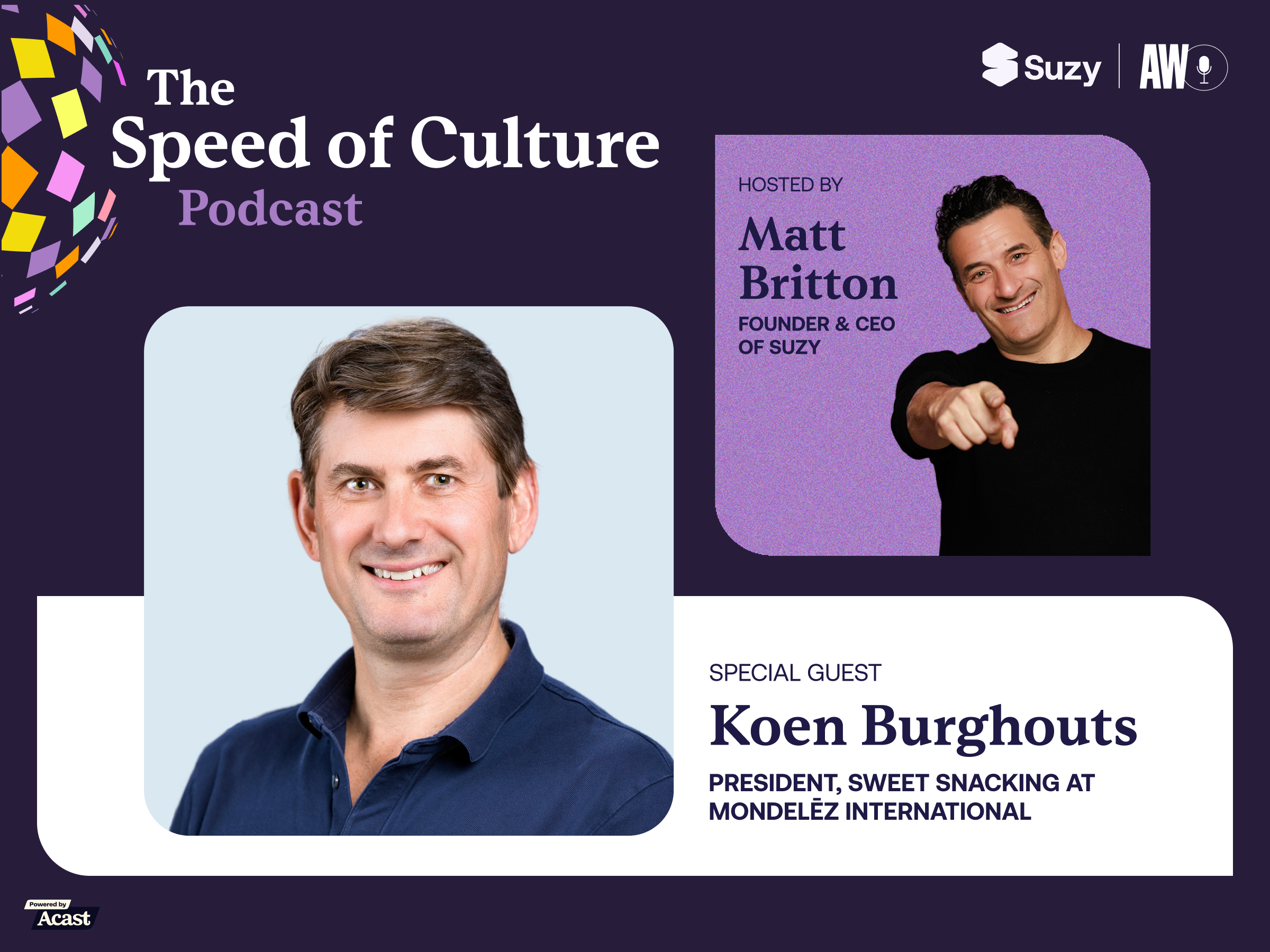Innovation and assortment planning are critical for brands to stay competitive. When it comes to products and services, expansion of offerings is one way to achieve innovation. But how do you turn a variety of ideas into an offering that will maximize your reach, and ultimately your ROI?
Imagine you own an ice cream brand. How do you know what flavors to prioritize during product development? Will chocolate or vanilla maximize sales among your target audience? And how frequently will consumers buy from you?
Understanding consumer preferences is important. But it’s also critical to gauge how much of your different offerings consumers might buy and how often, so you can maximize your return on investment. TURF analysis can help you find the sweet spot.
TURF analysis is a powerful methodology that helps businesses understand preferred combinations and optimize product offerings so you can maximize your consumer reach.
In this blog post, we'll take a deep dive into TURF analysis and explore how it works. We’ll cover the benefits it offers and how you can use it as a complement to other market research methodologies, like MaxDiff analysis. Plus, we’ll go over some best practices so you can get the most out of your next TURF analysis. Let’s get started.
What is TURF analysis?
TURF Analysis stands for Total Unduplicated Reach and Frequency. Basically, TURF helps market researchers identify the optimal combination from a list of items that will reach the largest number of potential customers. It also predicts how many consumers might buy that optimal combination and how often. With TURF, brands can forecast the features, flavors, products, or other attribute combinations that will be the most successful in the market.
Benefits of TURF analysis
With numerous benefits, TURF analysis belongs in every brand’s toolbox. With TURF, you can:
- Quickly assess the market potential (reach) of new products.
- Determine your optimal product lineup: Look at any combination of claims, flavors, services, and more to determine your best outcome.
- Quantify the performance of your products and understand the relative strength of each combination of flavors, claims, features, and purchase intent depending on the context of how each question is asked.
TURF analysis outputs
Market researchers look at three outputs after TURF analysis.
- Total Reach: The total number of unique customers that are reached by a specific product or service combination.
- Total Frequency: The average number of times that a customer purchases a specific product or service combination within a given period.
- Unduplicated Reach: The number of unique customers that are reached by one or more products or services in a combination.
- Incremental Reach: The additional number of unique customers that are reached by adding a specific product or service to a combination.
At Suzy, this information is viewed via a waterfall chart, table, or attribute performance chart. A dynamic simulator allows for the further testing of additional scenarios.
An example of TURF analysis
Let’s look at an example of TURF analysis on the Suzy platform using our ice cream brand.
TURF analysis questions
TURF analysis is programmed like multi-select, multiple-choice questions. Often questions are framed like this:
- Which of the following options would you purchase?
- Which of the following options would you find relevant?
- Which of the following options would you find appealing?
In our case, we might ask: Which of the following ice cream flavors would you purchase?
TURF analysis questions do not have to be oriented in terms of purchase intent. We could also explore how relevant a certain product feature is (say, offering ice cream cones alongside our ice cream product) or how appealing the packaging is (do consumers like blue or pink containers?).
Below, you’ll see an example of the waterfall chart. Next, let’s define a few key terms.

- Total: The cumulative nature of the output chart, where the result for each item is measured incrementally to all of the items before it. On the Suzy platform, you can see the total illustrated with light purple and dark purple bars in the graphic below.

- Unduplicated: Each respondent is unique. Traditional multiple-choice, multi-select questions are a duplicated measure, meaning one respondent can count multiple times. That doesn’t happen in TURF analysis.

- Reach: The percentage of respondents who have selected at least one item in a given combination of items.
- Cumulative reach: refers to the percentage of respondents who selected at least one of the options in the combination. You can see cumulative reach in the chart below represented by the combo of light and dark purple bars. Here, chocolate shows the cumulative reach of chocolate + vanilla. Butter pecan shows the cumulative reach of chocolate + vanilla + butter pecan.
- Incremental reach: is part of the cumulative reach, and refers to the net new percentage of unique respondents who were reached with the inclusion of the attribute. Incremental reach is illustrated with just dark purple bars. In this example, +21% (64% on Vanilla + Chocolate minus 43% on Chocolate) of respondents would be reached if you offered vanilla and chocolate, versus just chocolate.

- Frequency: The average number of items selected by a respondent in a given combination. In our example, the average number of items selected (2.6) among all respondents who selected at least one of the following items: vanilla, chocolate, cookie dough, and butter pecan. In this particular example, we asked consumers about which flavors they would purchase, so we could use frequency to gauge purchase intent.

A customizable, interactive simulator allows you to look at any combination of claims, flavors, services, and more to determine your optimal product lineup. You can exclude certain items, specify custom orders, filter by demographics, or even toggle between two frequency metrics to go deeper with your learning.
Using TURF analysis with other market research methodologies
While you can use it as a standalone question, TURF analysis is an excellent complement to methodologies like MaxDiff Analysis, monadic testing, and qualitative research.
MaxDiff and TURF analysis: The dynamic duo
TURF can be used with MaxDiff analysis to identify an option prioritization before establishing the most impactful combinations, using determining factors like purchase intent or appeal.
MaxDiff analysis, or best-worst scaling, measures respondents' preference and importance on a list of items. Using our ice cream brand example, let’s say we’re trying to figure out which two new flavors to launch. We could run a MaxDiff survey to understand which flavors consumers prefer the most from up to 30+ attributes.
Let’s say our MaxDiff showed that consumers like vanilla, caramel, strawberry, and chocolate ice cream the most among a broader list.
With this prioritization behind us, we can then use TURF to figure out the best combination with those four flavors, how many people will likely buy this combination (or combination thereof), and how frequently they might buy it. We might determine that vanilla and chocolate will ultimately provide the best combination overall (meeting the most consumers with the fewest options) and result in the highest buying potential.
Monadic testing and TURF analysis
Monadic, or A/B testing, helps researchers determine how a product will perform in real life. A form of concept testing, monadic testing shows consumers concepts in isolation, as they might see on a store shelf.
If multiple flavor concepts performed well for our ice cream brand and we could possibly move forward with two or more, we can use TURF analysis to determine the most ideal combo.
Qualitative research and TURF analysis
With qualitative research, brands can uncover consumer preferences, trends, attitudes, and behaviors in their own words. From focus groups to IDIs to unmoderated video open ends, qualitative research can help researchers uncover hidden insights, including the why behind certain behaviors.
Our ice cream brand may use qualitative research to understand what makes an ice cream feel premium and identify potential differences among groups of consumers which can drive more robust analysis. Or we might ask when consumers eat ice cream and who they eat it with so we can gauge packing styles and sizes. Then, we could tap into TURF analysis to understand how these features might work best with certain flavors to maximize our consumer reach.
Best practices for TURF analysis
To get the most out of your research, we recommend the following best practices for TURF analysis:
- Determine the overall goal for your research and what other methodologies, if any, would be helpful.
- Launch fewer items/items for longer/more complex surveys to prevent fatigue
- Keep your audience in mind. Depending on how much analysis you may want to perform, it is recommended that you have at least N=100 per desired cut.
- Pair with a relative metric (i.e. MaxDiff or Monadic A/B testing). TURF is an absolute metric, so pair it up with MaxDiff or ranking questions for better insights.
- Add a “none of the above” answer. It is also important to understand if none of the options provided drive interest. This will reveal an opportunity to further develop your list of options before committing to going to market.
Final words
TURF analysis can provide valuable insights for businesses looking to optimize their product offerings and understand consumer preferences, helping them find the sweet spot for optimal ROI. By incorporating TURF analysis into research toolkits, brands, and market researchers can enhance their understanding of optimal combinations, identify market opportunities, and make data-driven decisions.
TURF analysis at Suzy
Suzy’s consumer research platform offers TURF analysis as a standalone question that can be added to any survey type and you can test up to 30 attributes to maximize your output. With TURF at Suzy, you can:
- Explore your results with our built-in simulator. Reposition, require, exclude, or remove certain attributes to find the absolute best combination for your products and services.
- Target your optimal consumer by filtering demographic information, or toggling between frequency metrics for the best possible ROI.
- Customize your analysis by adding media, or go deeper into your research by piping in answers from TURF into multiple-choice, scale, and custom grid questions to gain a deep understanding of your audience's perspective.
Ready to see TURF analysis at Suzy in action? Book a demo with our team today to see how it works and experience firsthand how TURF analysis can provide valuable insights for your business.
.webp)







